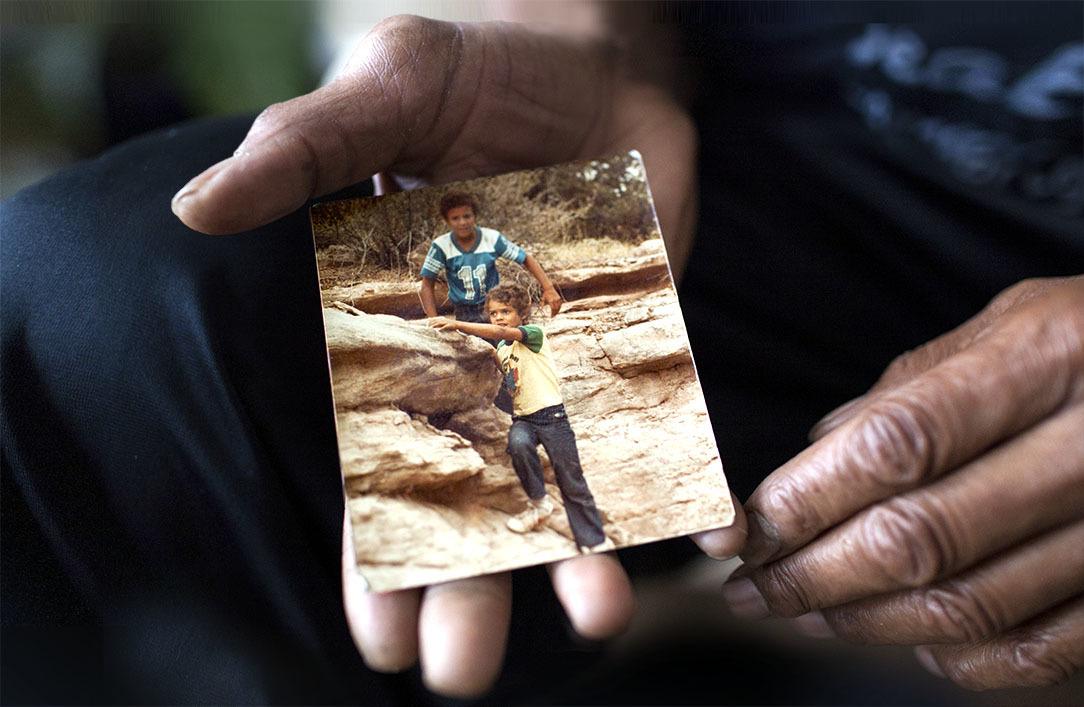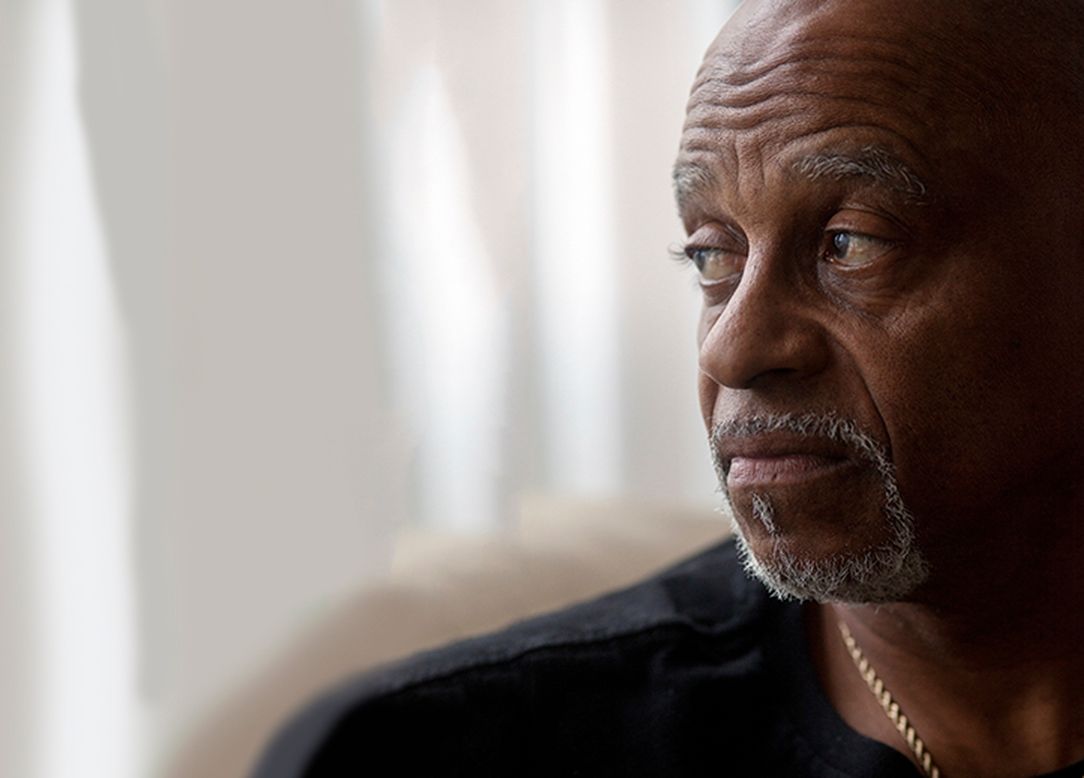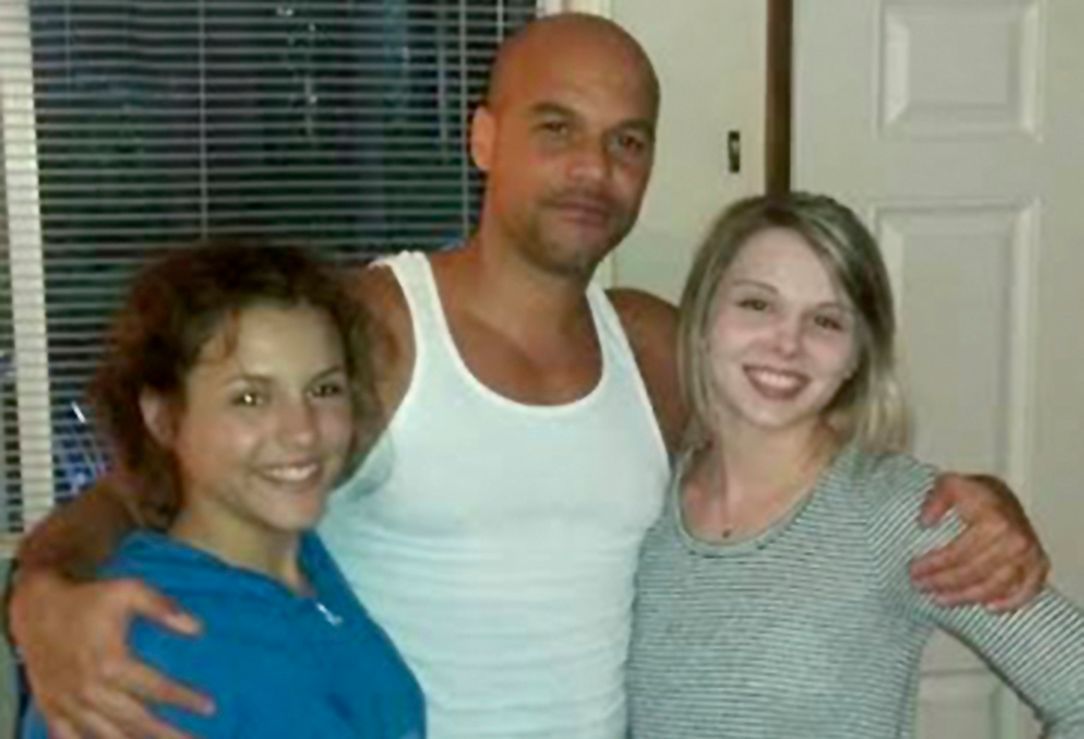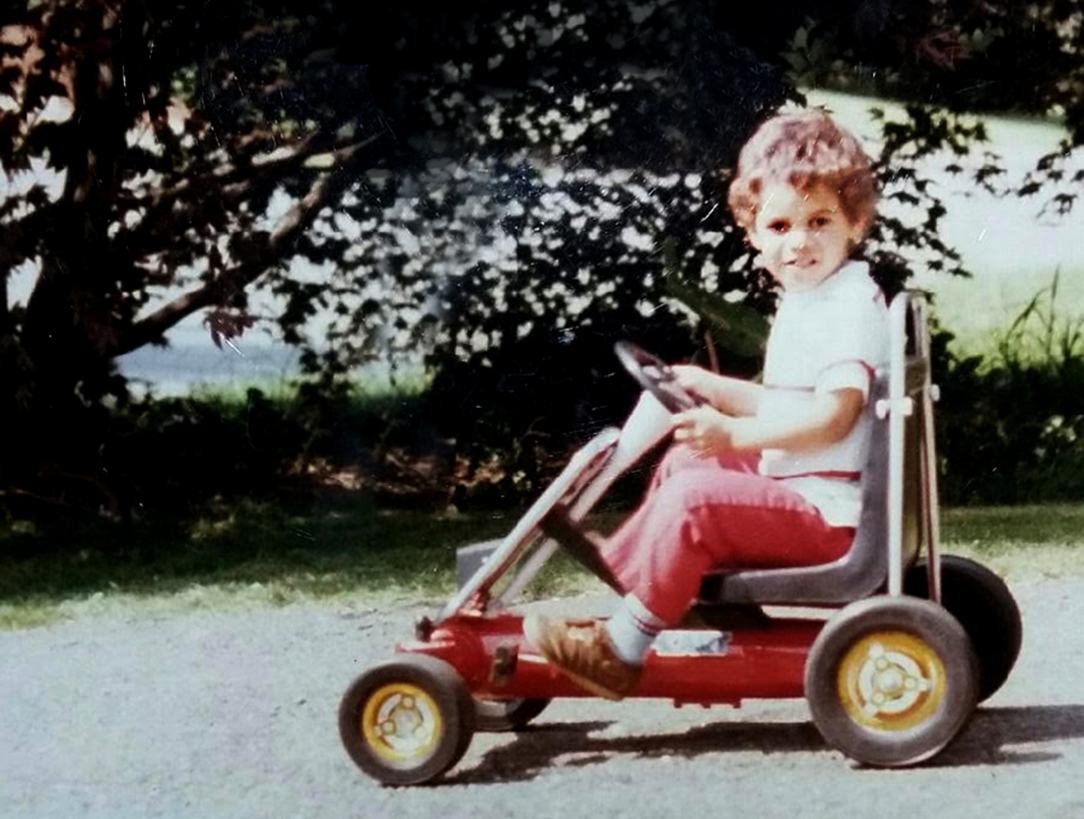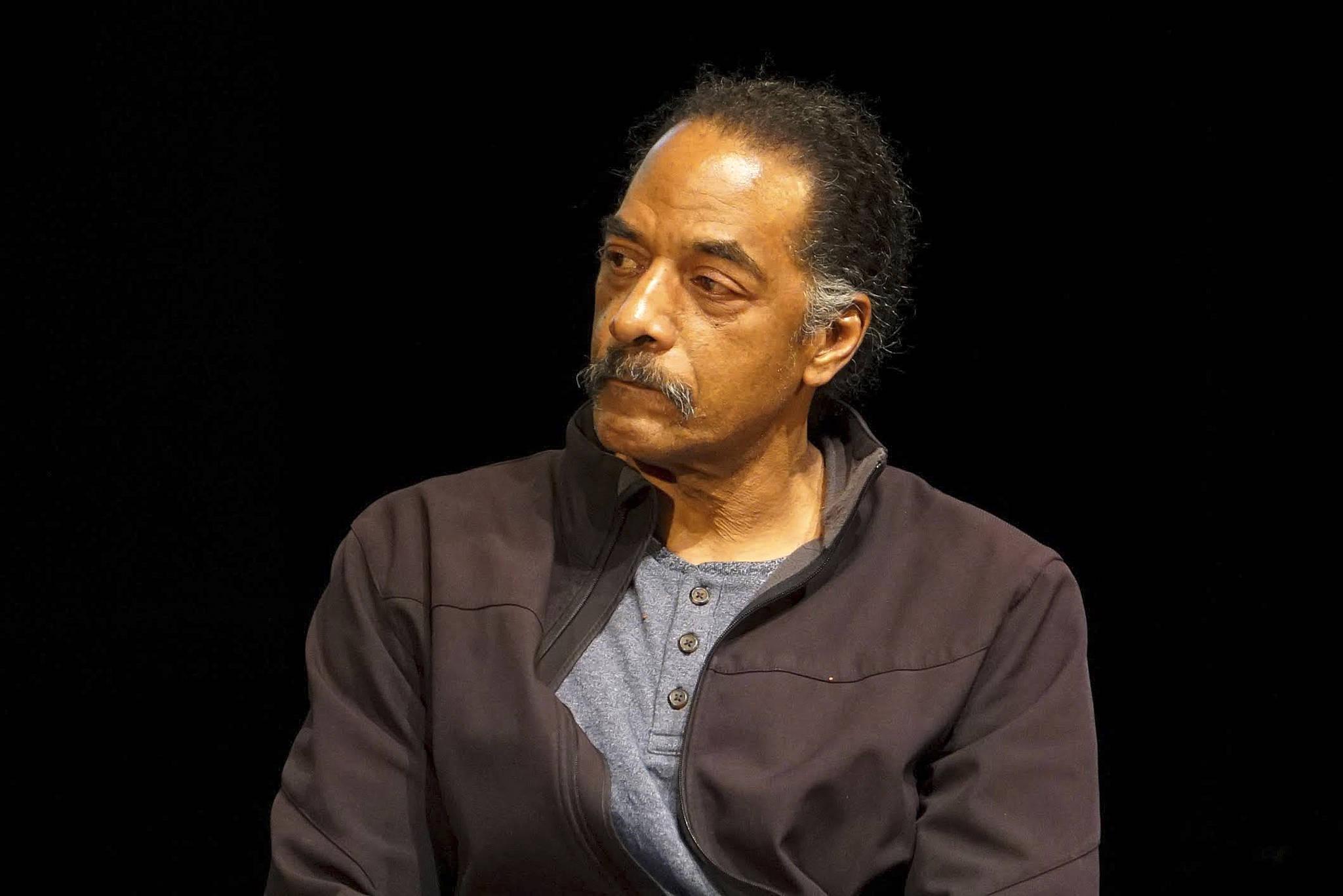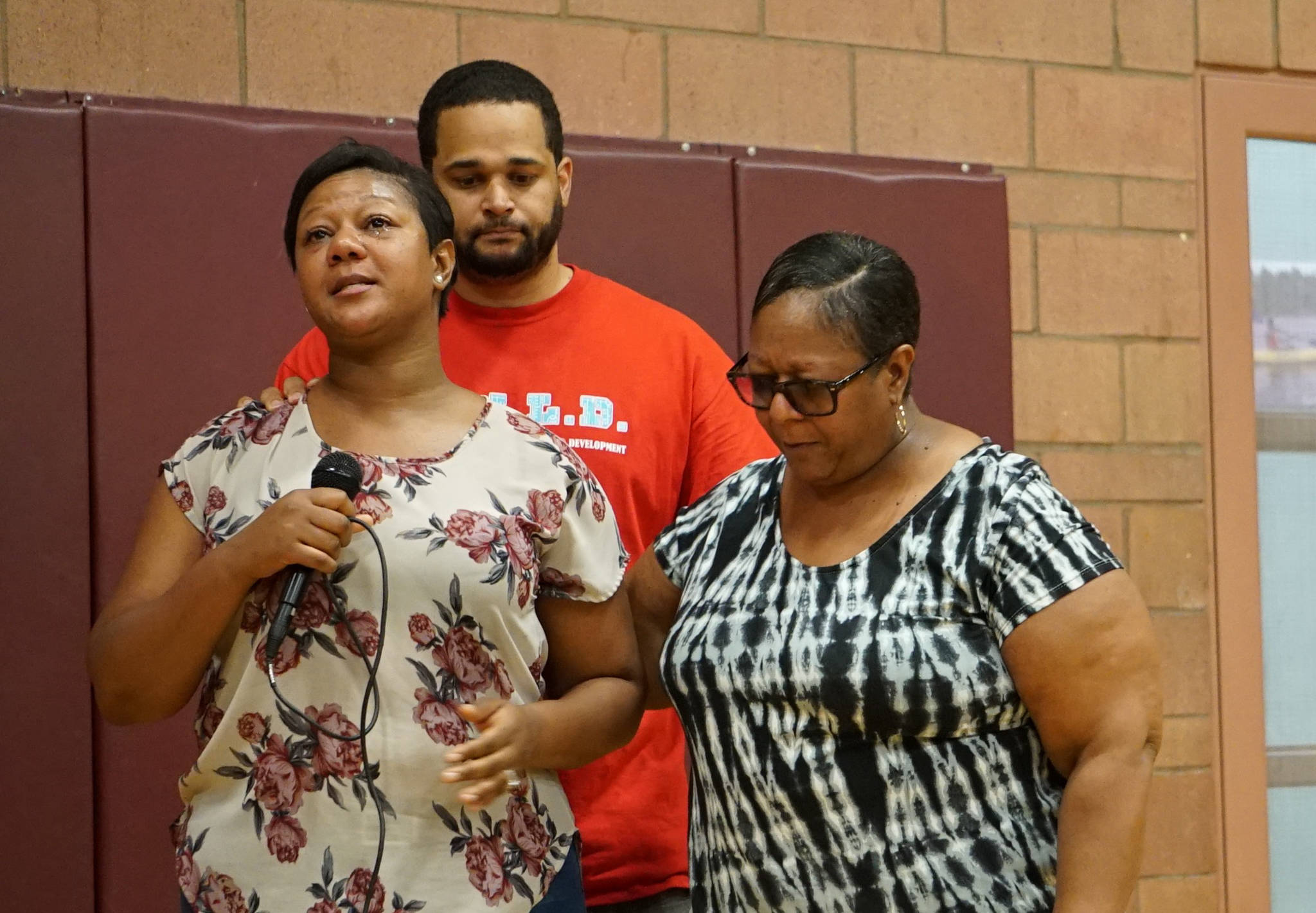Like almost every night, Bill Austin awakens to screams.
Nathan is trapped in another nightmare.
Bill leaps from his bed and rushes down the hallway. He nearly rips the handle off the door of his son’s room to find the 38-year-old in a familiar state: fighting demons born during a decade in prison.
The images that flood his son’s mind are recurring, says the 64-year-old. Gray cell walls collapse in, death drips from the mouths of sadistic cellmates, and images appear of his body pummeled and bathed in blood.
Bill dashes to Nathan’s bedside, and shakes him from the grip of a chaotic slumber. “Nathan, wake up!” he commands.
The senses of his second oldest son gradually obey. “It’s OK.” Bill pours forth reassurances, holding him as panic-stricken gasps give way to calm breaths.
For Bill, the ability to clutch his arms around his frantic boy’s trembling shoulderblades is relished, if bittersweet. For 10 years, Bill spent “every waking moment” working to free his son from what he calls an “injustice system” that held him in the prisons of two different states for the crime of drug addiction in 21st-century America. In the process, he drained his already dwindling savings, flying from state to state as Colorado and Washington played ping-pong with DOC#832037.
He was allowed to hug Nathan for only seven seconds whenever he’d visit him at Washington State Penitentiary in Walla Walla, Nathan’s home for 33 months until this past spring.
He acted as Nathan’s de facto lawyer when he thought his son’s defense attorneys weren’t doing enough. He met with senators, prosecutors, attorneys general, activists—anyone who could do something to free Nathan, among the millions incarcerated for simple drug possession in the United States.
Bill believed that his son should receive treatment, not prison, for his two-decade drug dependency.
Nathan did make it out. And for a time Bill had his son back. However, old demons resurfaced. Nathan would again be torn from his grasp.
As Bill Austin sits in the conference room of the Hillman City Collaboratory in late October sharing barbecued baked beans and potato salad with his partner Diane Whitman, he smiles.
Slim, trim, and bald, his 6’3” athletic frame more than hints at glory days of college-basketball stardom in his hometown of Milwaukee, Wis., and on-court battles against his friend, Seattle Supersonics legend, and godfather to Nathan, Slick Watts.
Today he’s reminiscing about his son’s childhood days in Redmond—better days, when Nathan was a straight-A honor student at The Overlake School scoring in the 90th percentile nationally on standardized tests. Then everything changed.
“He was almost beaten to death,” Bill says, pushing baked beans around his paper plate.
Nathan lays out the tale of the day his childhood ended in a letter to supporters, written while in prison in Walla Walla.
A promising basketball star who had inherited his father’s talent on the hardwood, Nathan was preparing for his first season of high-school basketball, where he would play alongside Watts’ son. Though a freshman, the tall, lanky athlete was likely to start on the varsity team.
While walking home from a movie theater on Halloween night, he was mistaken by gang members for the son of a rival Mexican gang leader, according to Bill. They beat him with golf clubs, stomped his head so hard that they broke Nathan’s orbital bone, and fractured his skull. They finished by stabbing him in the stomach with a screwdriver. Pummeled almost beyond recognition and covered in blood, Nathan was thrown into a ditch and left to die.
Doctors assessed Nathan as most likely suffering brain damage. Several follow-up appointments were scheduled after his initial rehabilitation, but the teen never showed up for any.
Nathan would sob uncontrollably to the point of vomiting when he was alone, his father said. In his letter, Nathan describes fears that he would be seen as an outcast by his high-school classmates.
Why can’t he stop the images flashing in his head of blood dirtying the air as fists rush his face? Why does his stomach knot up anytime he’s around others, including his family? Why can’t he stop crying?
Once outgoing, he started to turn inward. Soon he started drinking; harder drugs followed.
The depression would flood back whenever he wasn’t using, Nathan writes. In his letter, Nathan confesses to feeling responsible for being beaten, responsible for his parents’ divorce senior year of high school, responsible for anything that went wrong.
Years passed. Nathan managed to don a smile in public at work every day, but couldn’t keep a job past a few months. The depression would become too severe, and he’d suddenly quit and go on a drug bender.
His mother moved to Grand Junction, Colo., after divorcing Bill, and both parents thought it would be a great place for Nathan to reset his life. It was, for a little while. In 2002, at age 24, he started classes at Mesa State College. He excelled in his studies.
However, depression followed him. To battle it this time, he used Adderall, a prescription drug meant to treat attention deficit disorder and said to offer a boost similar to that of cocaine. But then he was introduced to a newer, cheaper drug as plentiful on his college campus as Skittles are on middle-school playgrounds: methamphetamine.
Six months later he faced his first possession charge. Less than a month after that, he was charged a second time for the same offense.
A month later, lost in addiction’s abyss and under arraignment for his second drug possession, he chose not to dispose of the drugs he’d stolen from a dealer the previous night. While he was being arraigned, officers found two ounces on him, enough for Mesa County prosecutors to hang a charge of “possession with the intent to distribute” on him.
Facing a possible 12-year sentence, he agreed to a plea deal. Five years in prison.
That was the first time he said goodbye to his then-wife and 6-month-old daughter. He had no possibility of parole and a mandatory release date of August 25, 2008. He was sent to Sterling Correctional Facility, on the eastern plains of Colorado.
During those five years, the serial drug abuser was forced to share a cell with a murderer, and then a rapist. There was never a night without fear, according to Nathan’s letter.
Bill Austin. Photo by Jovelle Tamayo
It was in December 2009, just a little over a year after getting out of Sterling, when Nathan had another run-in with the police. During a traffic stop outside Grand Junction, Mesa County officers discovered a sandwich bag containing trace amounts of meth in the backseat cushion of the car he was riding in. Nathan was arrested and locked up in the local jail.
Nathan, who is black, told the arresting officers the bag wasn’t his. The officers handcuffed him anyway, while allowing the driver and the car’s other passenger, both white, to go free.
It was Nathan’s fourth arrest for drug possession in the past seven years, meaning that if he were found guilty, the state of Colorado could impose a 24-year mandatory minimum sentence under a Habitual Criminal Charge. It would be Nathan’s second extended drug sentence, after the recent five-year stint at Sterling.
A week later, writing from a Mesa County Jail cell, Nathan drafted a plea to Judge Thomas Deister. In it, Nathan admitted to using drugs for the past 18 years, during which he’d tried to break free of his addiction, but relapsed after a tumultuous period in his life that included chronic bouts of severe depression and a divorce (he’d become estranged from his wife the year before). In his letter, he maintained that the empty sandwich bag found in the car was not his while admitting that he needed help with his addiction. In his nearly two decades of drug use, he had never stepped foot inside a rehab center.
Nathan wrote that he wanted to be placed inside a recently opened 90-day inpatient program called the Summit View Program in Grand Junction. Deister never responded to his request, while the prosecution viewed treatment as a non-starter, offering Nathan a lesser sentence of six years behind bars if, and only if, he pled guilty.
Nathan says he initiated contact with Mesa’s Transitional Coordinator, Marivel McClelland, to apply for inpatient treatment himself. She said she would be able to procure Nathan a bed, and lined up employment and shared housing upon successful completion of the rehab program. Meanwhile, his parole officer recommended his charge be reduced to petty paraphernalia.
His father used $10,000 of his savings on defense attorney Jon Levine, with the hope that Levine could reach an agreement with prosecution that would allow Nathan to avoid incarceration. Awaiting trial, Nathan spent 18 months alone in a gray-walled cell in county jail. During those months, Nathan volunteered for every substance-abuse and life-enrichment class Mesa offered. He completed nine courses, and even had a role in the creation of a faith-based drug-recovery group.
Despite his personal progress, his work with other inmates in the prison, and his work to develop a comprehensive action plan upon his release, the prosecution refused to entertain an in-patient treatment plan. The best Levine could do was the exact bargain Nathan had been offered all those months ago: plead guilty to felony possession of a controlled substance and serve six years in prison.
As Nathan’s trial date drew near, the prosecution tacked on the Habitual Criminal Charge against him—which the Austins claim the prosecution had promised not to do. Judge Diester granted the new charge, which meant that Nathan now faced two decades in prison unless he took the plea deal.
The original letter Nathan wrote to Diester asking to be placed in a treatment facility was admitted into evidence by the prosecution as an admission of Nathan’s guilt.
Both of the two un-arrested, un-jailed people who were in the car with Nathan the fateful night he was arrested agreed to testify against him.
Outraged, Bill demanded and received a sit-down with Mesa County District Attorney Pete Hautzinger. Bill arrived at Hautzinger’s office with a drug-addiction specialist, Nathan’s parole officer, and an attorney in tow. He pleaded for drug treatment for Nathan.
There was some hope. Hautzinger served on the Comprehensive Sentencing Task Force for Colorado’s Commission on Criminal and Juvenile Justice, formed in 2007, which at the time was on the verge of doing away with stiff sentences for drug offenders. However, those changes wouldn’t have applied to Nathan, who was facing a fifth charge. And Hautzinger insisted Nathan’s case had been handled appropriately.
Nathan pled guilty to felony possession. Diester heaped another 16 years of felony probation on top of the 6 year sentence, along with 1,600 hours of community service, and $12,000 in fines and fees.
Nathan did eventually receive some leniency. After serving only part of his six-year sentence, he was released. He moved home, arriving in Seattle on New Year’s Eve 2011 to live with his father and his daughter, whom Nathan had barely seen since she was 6 months old.
Adapting to a world he’d been absent from for years was tough. Nathan was plagued by nightmares of rotting alone in a colorless Colorado cell, time gnawing away at his body.
In his waking hours, employment proved difficult to find. The Seattle City Council would eventually pass an ordinance preventing employers from rejecting the applications of convicted felons outright, but not in time for Nathan. He found it impossible to get work.
Depression started slowly to consume him. The outside world was as unforgiving as the system that took him from it for a time. He tried hard in those first 10 months of freedom to resist the urge to use, but the temptation became unbearable as hard luck again found him.
On November 3, 2012, Nathan was scheduled to check in with his parole officer. In his letter, Nathan claimed that he hadn’t realized that—that he’d thought his PO had changed the meeting to mid-November. A phone call informed him that, whether through a filing error or a miscommunication, he was mistaken.
He says the parole officer informed him,“There’s now a warrant out for your arrest.”
And so Nathan ran, parking his body on the frigid pavement of Thurston County’s streets during a harsh winter.
Hungry, fearful, and suicidal, he again turned to drugs to tame his depression. He stole a car, parking it in the woods near Tumwater as a temporary shelter from freezing winds and chilling rain.
On February 28, 2013, Nathan was arrested for vehicle theft and sent to Walla Walla. There he was diagnosed with attention deficit hyperactivity disorder and post-traumatic stress disorder, stemming from his childhood attack, Nathan writes. Those diagnoses led to him being properly medicated; with his disorders under control, he was accepted into the state’s Drug Offender Sentencing Alternative treatment program, and signed up for classes through Walla Walla Community College. He excelled in Graphic Design; his first-quarter grades yielded a GPA of 3.7.
On good behavior, he was accepted into the Rap House/Lincoln Park Work release program in Tacoma. The program, which treats co-occurring disorders, such as his PTSD and drug addiction, would put him closer to his family and the support it offered. Things were looking up for the 37-year-old.
Then Colorado came calling again.
Nathan’s arrest in Washington meant a violation of his 16-year probation, stemming back to that empty baggie. Mesa County District Court placed an extradition warrant on him, and planned to extract him as soon as his Washington sentence was up, removing him from his work-release program and his family, guaranteeing that he will not be free from the Colorado Department of Corrections until his mid-50s.
Bill kept fighting, enduring sleepless nights as he challenged the extradition order. He knocked on the doors of anyone he thought could help, from Gov. Jay Inslee to Sen. Maria Cantwell. Bill says he even persuaded Secret Service personnel to deliver a letter to Attorney General Loretta Lynch when she visited Seattle.
The argument was sound in Bill’s mind. Nathan had gotten his life together while in Walla Walla; what unforgivable debt does he owe society? Why burden taxpayers with the incarceration of a nonviolent offender?
Whom did he harm, other than himself and his own family?
Nathan with his daughter and a family friend. Photo courtesy of Bill Austin
“It makes zero senseto lock a drug addict up,” says Lance Dodes, a former Harvard Medical School professor whose work details the “bad science” behind our country’s understanding of addiction and the failures of its rehabilitation methods.
“Addiction is a psychological thing,” he says over the phone from his Beverly Hills home. “It is a compulsion like overeating or rearranging things on a desk. No one wants to criminalize someone for compulsive overeating, but we do so with drug addicts.”
The author of three books on alternative drug treatments, Dodes has two problems with the way America treats addicts. First, that it miscategorizes drug abuse as a “brain disease,” based on a disputed study of rats and heroin by the National Institute of Drug Abuse, rather than a compulsive disorder. The other is its inability to distinguish the glaring difference between criminals and addicts.
Of the 1,488,707 Americans arrested for drug-law violations in 2015 alone, 16.1 percent were for the sale or manufacture of drugs. The other 83.9 percent were for simple possession.
“Those benefiting from selling the substance should be treated as criminals, those who have the compulsion should be treated,” Dodes says. “That’s not hard to distinguish.” He believes the main culprit of drug addicts’ continued criminalization is our nation’s embedded puritanical view of drug use as immoral and weak.
About 20.1 million Americans suffered from a drug disorder last year, says Dodes, pointing out that good treatment options are rarely available for them.
Peer-reviewed data shows that programs like Alcoholics Anonymous rarely work, with a success rate between 5 and 10 percent. Most people don’t understand that a person has peaks and valleys in recovering from addiction, he says, which include tolerating the occasional relapse. “Would you expect a compulsive eater to never overeat again?” he asks. In the case of Nathan and addicts like him, Dodes suggests serious psychotherapy that would address the root causes of his addiction, namely his attack when he was 14 years old.
An avid reader of Dodes’ work and a former drug and alcohol counselor himself, Bill Austin knew his son desperately needed such treatment.
Bill effectively quit work at his car dealership, stopped coaching youth basketball, and rarely took any social engagements. He wrote nearly every one of the nation’s 100 senators to detail Nathan’s plight; tried to find allies in the prison-abolitionist movement that had gained traction after Michelle Alexander’s book The New Jim Crow brought attention to America’s mass-incarceration problem; and attended every community meeting he could find looking for sympathetic souls, spending nearly $100,000 on Nathan while he was in prison.
“Bill loves his son unconditionally, and it showed in how hard the man worked to get him released,” says Afam Ayika, a community organizer who counseled Bill more than 30 different times over the past two and a half years. “Imagine incarcerated addicts who don’t have someone like him fighting for them.”
Despite his efforts, it appeared that Nathan would soon be the property of Colorado’s Department of Corrections. Unless a miracle happened.
That miracle arrived in the form of an odd coupling of a maverick City Attorney from Seattle who once instructed his subordinates to not prosecute marijuana smokers prior to legalization, and a straight-laced Assistant District Attorney in one of Colorado’s most conservative bastions.
“Bill is the persistent widow,” Seattle City Attorney Pete Holmes says from his Columbia Tower office on a recent afternoon, referring to the Biblical tale of a widow who pesters an unmoving judge until he delivers her justice. Bill, sitting next to Holmes, chuckles at the comparison.
Bill and Holmes have a history together, but it took a while for Nathan’s plight to reach the City Attorney’s attention. When Holmes learned of Nathan’s situation, he stepped in. “This was something I thought could be handled prosecutor to prosecutor,” he says. In search of a resolution, he reached out to Richard Tuttle, the Assistant District Attorney in Mesa County overseeing Nathan’s extradition.
Over five months, beginning in November 2015, Holmes had seven separate calls with Tuttle regarding Nathan. Holmes informed Tuttle that Nathan could be accepted into the Tacoma outpatient treatment program only if Colorado’s extradition warrant was retracted.
Seeing no reason to deprive a drug addict from that support group—and noting that Nathan’s mother no longer lived in Colorado—Tuttle petitioned the court to quash Nathan’s warrant on March 14 of this year. The next day Mesa County dropped the extradition claim.
On June 2 Nathan came home.
Bill’s high-wattage smile resurfaces when he thinks of the day Nathan walked through the front door, hugging his siblings and snapping photos that were soon posted on social media. Nathan’s daughter, now a teenager, had tears pouring from her face as her father held her.
The last time Nathan’s family saw him was on Father’s Day. His daughter had come by Bill’s house to spend time with her father. He said he needed to take off for a moment but would be back.
He never returned.
Bill suspected this might happen. He had begged his son’s community corrections officer in the outpatient Tacoma program to place him in an inpatient program where he would receive counseling for his mental disorder. Without it, Nathan’s re-entry into society would be fraught and, Bill knew too well, temporary.
“I told Nathan’s CCO that I’d been trying to get him treatment for six years,” Bill says now. “He’s not just going to walk into treatment. He’s got mental disorders along with his drug thing.” Bill explains that Nathan was not given mandatory inpatient treatment as his son had requested. Instead the CCO would “tell him” to check himself into treatment should he relapse.
Still, Bill won’t quit—if not for Nathan, then to change the criminal-justice system he feels failed his son.
There has been some hope. While harder drugs have yet to seriously be considered, seven states have currently decriminalized marijuana, and a national conversation has been spurred around drug reform with America’s current opioid epidemic, killing 27,000 people a year.
Bill says the latter has gotten attention only because drugs have finally started ravaging white households on a vast scale, as they have black communities for decades. However, he’ll take the concern any way he can get it.
There is also Seattle’s Law Enforcement Assisted Diversion program, which diverts drug offenders from one prosecution if they agree to work with a case manager to find employment and counseling. The program has become a model for other municipalities.
All this is cold consolation to Bill, however, as he prepares to again deal with the criminal-justice system when Nathan eventually returns to him. If he returns.
In the ensuing months, Nathan’s six siblings have mostly given up on their brother. They’ve seen the toll Bill’s fight has taken on him: high stress levels, a lack of financial security in old age. “Most of them don’t understand why he keeps going back to drugs,” Bill says.
And as for Nathan’s daughter?
“She doesn’t really want anything to do with her father right now,” he confesses.
After all he’s sacrificed over the years, why can’t Bill quit?
“Because he’s my son.”
news@seattleweekly.com
This story was published in conjunction with the South Seattle Emerald.
